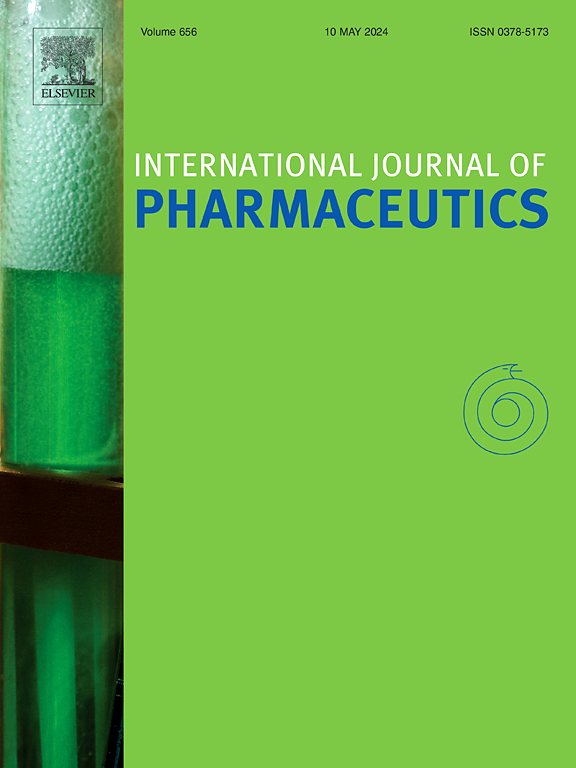随温度变化的药物粘度对无针喷射注射的影响。
IF 5.3
2区 医学
Q1 PHARMACOLOGY & PHARMACY
引用次数: 0
摘要
高粘度药物无法通过针头给药。通常情况下,这意味着这些药物的配制浓度较低,需要较高的给药量,通常必须通过静脉给药。喷射注射可为粘性药物的输送提供重要的解决方案。喷射注射是一种无针给药技术,可将液体药物形成细如发丝(∼200 微米)的高速(>100 米/秒)射流,穿透组织并将药物输送到组织中。虽然将粘性药物形成高速射流似乎与将其强制注入针头一样困难,但事实并非如此。最近的研究发现,喷射过程中的 "粘性加热 "会导致温度显著升高,从而降低喷射体外层的粘度;这种现象实际上导致药物在通过喷射口时发生 "自我润滑"。尽管这一发现有可能彻底改变高粘度药物的皮下给药方式,但此后这方面的进一步研究却鲜有报道。在这项工作中,我们开发了无针注射的有限元模型,以研究粘性加热如何影响射流产生、与注射孔材料的热交换如何影响这一过程,以及射流产生在多大程度上受流体初始温度的影响。然后,我们对粘性加热引起的射流和孔口温度变化进行了新颖的高速测量。我们发现,在室温下,粘度极高的流体(1 Pa-s)产生的射流速度大约会因粘滞加热而增加一倍。喷口的导热性能可将热量从喷流周边传走,从而降低粘性加热的润滑效果。我们随后展示了通过将 99 % 甘油(1 Pa-s)从 7 °C 预热至 37 °C 可将射流速度提高 6 倍。我们还演示了使用预热喷射器成功地将粘度很高的甘油溶液输送到猪的体外组织中。鉴于 99% 甘油的粘度比目前的蛋白质治疗剂高 10 到 100 倍,我们的研究结果证明了喷射注射的潜力,无论是否需要额外的药物预热,都可以无针输送比目前通过针头输送的药物粘度高得多的药物制剂。本文章由计算机程序翻译,如有差异,请以英文原文为准。
The effect of temperature-dependent drug viscosity on needle-free jet injection
Highly viscous drugs cannot be delivered through a needle. Typically, this means that these drugs are formulated at lower concentrations, demanding higher delivery volumes, which often must be delivered intravenously. Jet injection may provide an important solution for viscous drug delivery. Jet injection is a needle-free drug delivery technique whereby a liquid drug is formed into a hair-thin (∼200 µm) high-speed (>100 m/s) jet that penetrates and delivers itself into tissue. While it may seem that it would be just as difficult to form a viscous drug into a high-speed jet as it is to force it down a needle, this is not the case. Recent work has revealed that ‘viscous-heating’ during jet injection can result in significant temperature increase, and resultant viscosity decrease, in a thin outer-layer of the jet; this phenomenon effectively results in the drug ‘self-lubricating’ as it passes through a jet injection orifice. Despite the potential for this finding to revolutionise the subcutaneous delivery of high-viscosity drugs, little further work in this area has since been reported on. In this work we develop finite element models of needle-free injection to investigate how viscous heating affects jet production, how heat exchange with the orifice material influences this process, and to what extent jet production is affected by the initial temperature of the fluid. We then conduct novel high-speed measurements of jet and orifice temperature changes due to viscous heating. We find that viscous heating is responsible for approximately doubling the speed of jets that can be produced with very viscous fluid (1 Pa·s) at room temperature. The thermal conductivity of the orifice can transfer heat away from the perimeter of the jet, and thus reduce the lubricating effect of viscous heating. We then show that by preheating 99 % glycerol (1 Pa·s) from 7 °C to 37 °C the jet speed can be increased 6-fold. We also demonstrate the successful delivery of a very viscous glycerol solution using preheated jet injection into ex vivo porcine tissue. Given that 99 % glycerol is 10- to 100-fold more viscous than current protein therapeutics, our findings demonstrate the potential for jet injection, with or without additional drug preheating, to deliver drug formulations, needle-free, that are much more viscous than those currently delivered through needles.
求助全文
通过发布文献求助,成功后即可免费获取论文全文。
去求助
来源期刊
CiteScore
10.70
自引率
8.60%
发文量
951
审稿时长
72 days
期刊介绍:
The International Journal of Pharmaceutics is the third most cited journal in the "Pharmacy & Pharmacology" category out of 366 journals, being the true home for pharmaceutical scientists concerned with the physical, chemical and biological properties of devices and delivery systems for drugs, vaccines and biologicals, including their design, manufacture and evaluation. This includes evaluation of the properties of drugs, excipients such as surfactants and polymers and novel materials. The journal has special sections on pharmaceutical nanotechnology and personalized medicines, and publishes research papers, reviews, commentaries and letters to the editor as well as special issues.

 求助内容:
求助内容: 应助结果提醒方式:
应助结果提醒方式:


